How to Get Rid of Powdery Mildew
- March 29, 2024
- 0 comment
Learn How to Get Rid of Powdery Mildew, a guide to tackling this widespread fungal issue marked by powdery spots on plants. Discover effective management and prevention strategies to protect your plants from discoloration, distorted growth, and reduced yields.
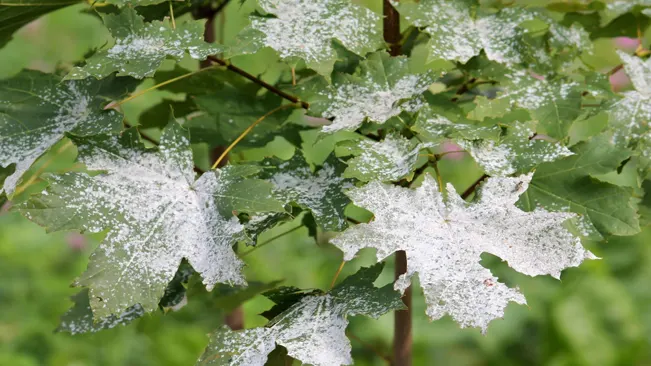
Identifying Powdery Mildew
Firstly, it’s crucial to identify powdery mildew correctly. Look for telltale white, powdery spots on the upper surfaces of leaves. These spots can spread quickly, covering large areas. Infected leaves may turn yellow and dry out.
Characteristics of Powdery Mildew
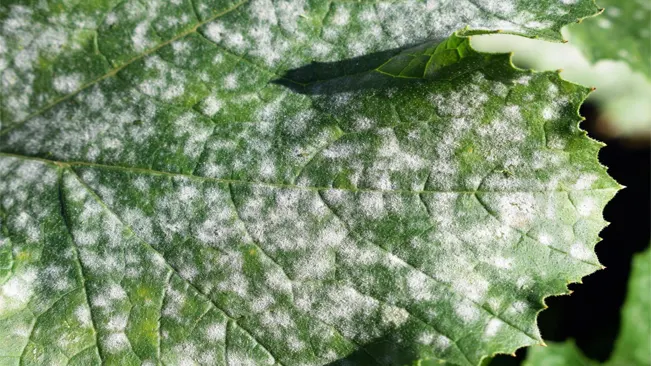
- Appearance: Powdery mildew typically appears as white or grayish-white powdery spots. These spots might look like they’ve been dusted onto the plant’s leaves and stems.
- Location: It usually starts on the upper surfaces of leaves. However, it can also appear on the lower leaves, stems, flower buds, and even fruit.
- Spread: The spots can initially be small but often spread quickly, covering large areas of the plant if left untreated.
- Plant Impact: As the mildew spreads, it can cause leaves to turn yellow, become distorted, or dry out. In severe cases, it can lead to leaf drop and reduced plant vigor.
Understanding the Development
- Favorable Conditions: Powdery mildew thrives in warm, dry climates with high humidity at the plant surface level. It’s less prevalent in very wet conditions.
- Lifecycle: The fungus overwinters in plant debris and produces spores in the spring, which are spread by wind to infect plants.
Why Identification is Crucial
- Effective Treatment: Correct identification ensures that you are applying the right treatments. Other plant issues can mimic mildew, such as downy mildew or mineral deposits, which require different management strategies.
- Preventing Spread: Knowing it’s powdery mildew allows you to take steps to prevent its spread to other plants.
- Cultural Practices: By identifying the disease early, you can implement cultural practices such as pruning infected areas, improving air circulation, and adjusting watering methods.
Diagnostic Tips
- Location and Timing: Powdery mildew often appears in late spring to early summer when days are warm but nights are still cool.
- Use a Magnifying Glass: A closer look can help distinguish powdery mildew from similar-looking substances.
- Rubbing the Leaf: Sometimes, rubbing the leaf surface gently can help determine if the white substance is powdery mildew, as it will typically wipe off.
Preventative Measures
Proper Plant Spacing
- Improved Air Circulation: Adequate space between plants allows air to circulate more freely. This airflow helps to keep the foliage dry, as powdery mildew thrives in stagnant, humid conditions.
- Reduced Humidity: When plants are too closely packed, moisture can get trapped in the foliage, creating an ideal environment for fungal growth. Proper spacing reduces this risk by allowing moisture to evaporate more quickly.
- Easier Inspection and Maintenance: Spaced-out plants are easier to inspect and maintain. You can spot early signs of disease more readily and treat affected areas without the disease spreading rapidly to nearby plants.
Choose Resistant Varieties
- Genetic Resistance: Some plant varieties are bred to have a natural resistance to certain diseases, including powdery mildew. These varieties can still be infected but are less likely to suffer significant damage.
- Research and Selection: When choosing plants, research which varieties are known to be resistant to powdery mildew. Nurseries and gardening guides often provide this information.
- Diverse Planting: Planting a diverse range of resistant varieties can also help, as it reduces the likelihood of a widespread outbreak in your garden.
Regular Inspection
- Early Detection: Regularly inspecting your plants allows you to catch the disease early, often before it has a chance to spread extensively. Look for the characteristic powdery, white spots on leaves and stems.
- Timely Intervention: Early detection allows for timely intervention, whether that’s removing affected parts, applying a fungicide, or adjusting cultural practices.
- Monitoring Plant Health: Regular inspections also help you monitor the overall health of your plants, allowing you to adjust care practices such as watering, fertilizing, and pruning to optimize plant health and resilience.
Cultural Control
Pruning and Disposal
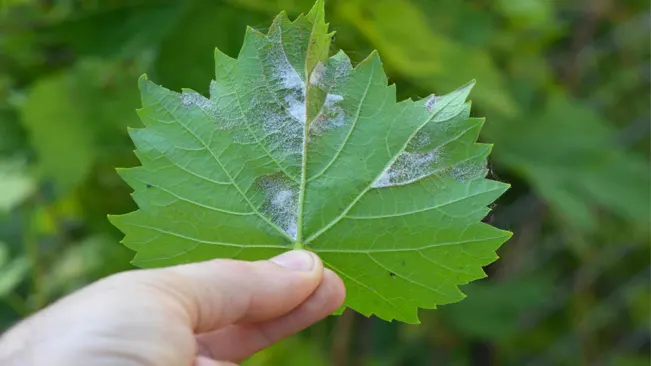
- Timely Action: As soon as you notice powdery mildew on a plant, it’s crucial to act immediately. This disease spreads quickly, so early intervention is key.
- Selective Pruning: Carefully prune the affected parts of the plant. This might include leaves, stems, or entire sections of the plant, depending on the severity of the infestation.
- Safe Disposal: Do not compost infected plant material, as this can allow the fungus to survive and spread. Instead, dispose of it in the trash or burn it, if local regulations permit.
- Tool Hygiene: After pruning, clean your tools thoroughly. This can be done using a solution of bleach and water (one part bleach to four parts water) or rubbing alcohol. This step is critical to prevent the spread of spores to other plants.
- Regular Monitoring: Continue to monitor the plant and its neighbors regularly for signs of mildew, repeating the pruning process if necessary.
Watering Practices

- Base Watering: Always water at the base of the plant. This method keeps the foliage dry, reducing the risk of powdery mildew, which thrives in damp conditions on leaf surfaces.
- Drip Irrigation: Consider using a drip irrigation system or soaker hoses. These systems deliver water directly to the soil, minimizing moisture on plant leaves.
- Morning Watering: If manual watering is your only option, do it in the morning. This allows any water that does get on the leaves to dry out during the day, reducing the risk of mildew development.
- Avoid Overhead Sprinkling: Overhead watering can spread spores by splashing them from one leaf to another. Avoid sprinklers that wet the foliage, especially if powdery mildew has been a problem in the past.
- Soil Moisture Balance: Ensure the soil is well-draining. Overly wet soil can create a humid microclimate around the plant, favoring mildew growth.
Organic Treatments
Milk Spray

- How it Works: The exact mechanism by which milk combats powdery mildew isn’t fully understood. It’s believed that when milk interacts with the sun’s rays, it produces free radicals that are toxic to the fungus. Additionally, milk may also boost the plant’s immune system.
- Preparation and Application: Mix one part milk (any kind, though some gardeners prefer whole milk for its higher fat content) with nine parts water. Spray this mixture onto the affected plants, covering all surfaces, including the undersides of leaves.
- Frequency: Apply once a week or after heavy rains. It’s most effective as a preventative measure or at the first signs of infection.
- Advantages: Milk is a readily available, inexpensive, and safe treatment. It’s non-toxic and environmentally friendly.
- Limitations: Milk can leave a residue on plants and may have an odor. It’s important to not overuse it as excessive milk can lead to sooty mold or other issues.
Baking Soda Spray

- How it Works: Baking soda, or sodium bicarbonate, creates an alkaline environment on the leaf surface, which is less hospitable for powdery mildew growth. It essentially disrupts the pH balance that the fungus needs to thrive.
- Preparation and Application: Dissolve one tablespoon of baking soda and half a teaspoon of a mild, preferably biodegradable liquid soap (which helps the solution stick to the leaves) in a gallon of water. Thoroughly spray this solution on the plant, ensuring to cover all affected areas.
- Frequency: Apply every 7-10 days or as needed. It’s most effective when used regularly and before the fungus spreads extensively.
- Advantages: Baking soda is a common household item, making this a cost-effective and accessible treatment. It’s also non-toxic and gentle on plants and the environment.
- Limitations: Overuse can cause a buildup of sodium in the soil, which can be harmful to plants. Also, it’s more preventive than curative and may not be effective against severe infections.
General Tips for Both Treatments
- Test First: Apply the treatment to a small area first to ensure it doesn’t harm the plant.
- Apply in Cool Weather: It’s best to apply these treatments in the cooler part of the day to avoid leaf burn.
- Regular Monitoring: Continuously monitor plants for signs of mildew and reapply treatments as necessary.
- Integrated Approach: Use these treatments as part of an integrated approach, including good cultural practices like adequate plant spacing and proper watering.
Chemical Control
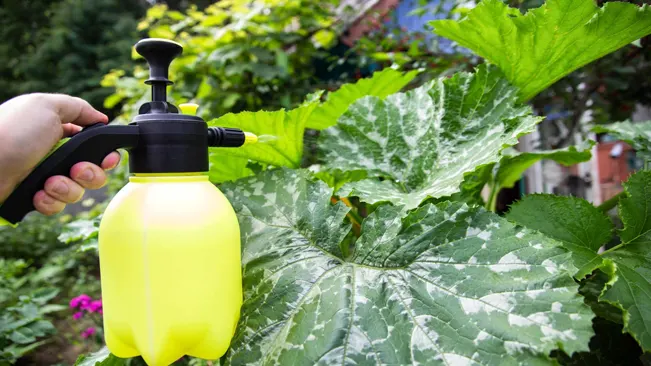
- Fungicides: As a last resort, use fungicides labeled for powdery mildew control. Follow the manufacturer’s instructions carefully.
Conclusion
Controlling powdery mildew involves a combination of cultural practices, organic remedies, and, if necessary, chemical treatments. Consistency and prevention are key. By following these steps, gardeners can maintain healthy, thriving plants free from the clutches of powdery mildew.
FAQs (Frequently Asked Questions)
- What is powdery mildew?
Powdery mildew is a fungal disease that affects a wide range of plants, characterized by white or gray powdery spots on the foliage and sometimes stems. - How do I identify powdery mildew on plants?
Look for white or gray powdery spots on leaves, often starting on lower leaves and spreading upward. Leaves may also become yellow and distorted. - Can powdery mildew spread to other plants?
Yes, powdery mildew can spread to other plants, especially in close proximity. It’s important to treat affected plants and practice good garden hygiene to prevent its spread. - What are some effective organic remedies for powdery mildew?
Organic remedies include a milk spray (1 part milk to 9 parts water) or a baking soda solution (1 tablespoon of baking soda and half a teaspoon of liquid soap in a gallon of water). - Is it safe to eat fruits and vegetables from plants with powdery mildew?
Yes, it’s generally safe to eat fruits and vegetables from plants with powdery mildew, but it’s advisable to wash them thoroughly first. Remove any severely affected parts of the plant. - How can I prevent powdery mildew in my garden?
Prevention strategies include choosing resistant plant varieties, ensuring proper air circulation with good plant spacing, and avoiding overhead watering. - Should I remove infected leaves or parts of the plant?
Yes, remove and dispose of infected leaves or parts of the plant to reduce the spread of spores. Always clean your tools after handling infected plants. - Are chemical fungicides necessary to treat powdery mildew?
Chemical fungicides should be used as a last resort. In many cases, cultural practices and organic treatments are sufficient. If using fungicides, choose one specifically labeled for powdery mildew and follow the instructions carefully. - Can powdery mildew affect indoor plants?
Yes, powdery mildew can also affect indoor plants. Ensure adequate ventilation and avoid overcrowding to minimize the risk. - How often should I apply organic sprays for powdery mildew?
Apply organic sprays every 7-10 days or as needed, depending on the severity of the infection. Monitor your plants closely and reapply after rain.

Kristine Moore
Forestry AuthorI'm Kristine Moore, a seasoned garden landscaping professional with over 30 years of experience. My extensive career has been dedicated to transforming outdoor spaces into stunning, sustainable landscapes. With a deep understanding of horticulture, design principles, and environmental stewardship, I have become a respected figure in the field, known for creating harmonious, visually appealing, and eco-friendly gardens. My commitment to excellence and continuous learning in landscaping trends and techniques has solidified my reputation as an expert in garden design and implementation.




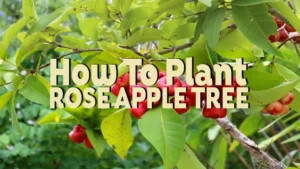




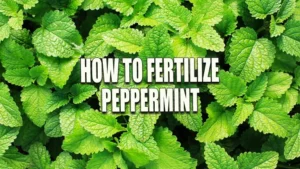

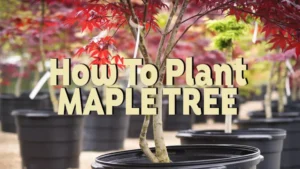

Leave your comment